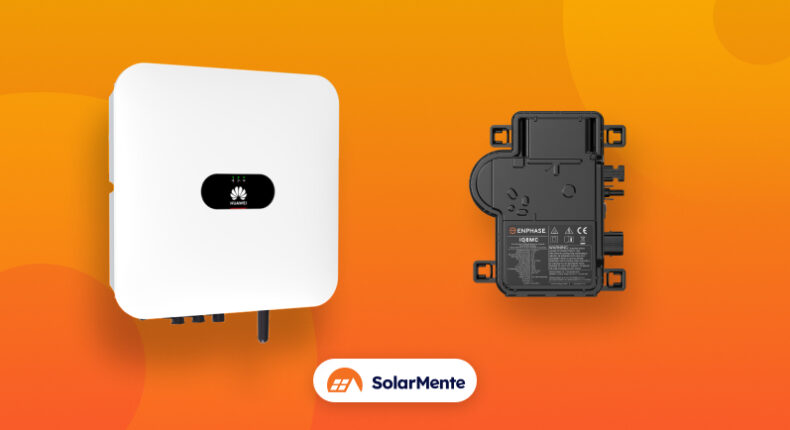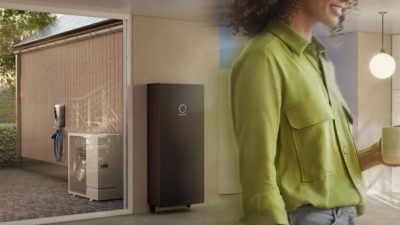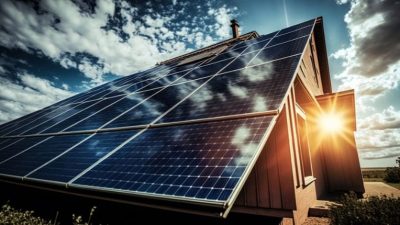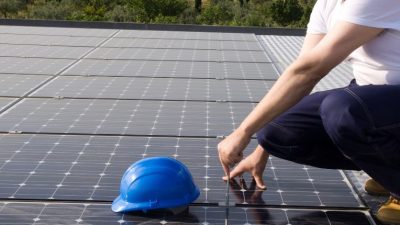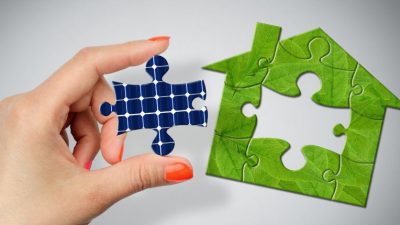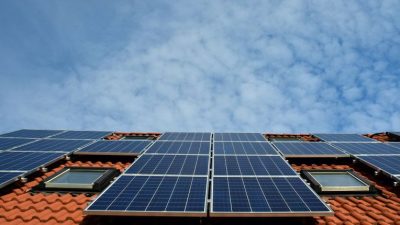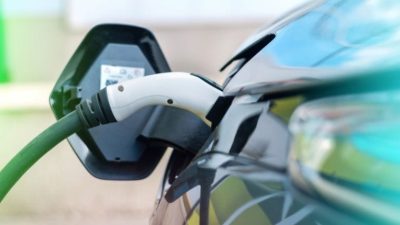Do you want to switch to solar energy, but don’t know which type of inverter will maximise the performance of your self-consumption installation?
There are many options to choose from on the market, but which is more suitable for your home?
Is a microinverter or an inverter better?
Each has its advantages and disadvantages and, therefore, it is important to know their differences when making a decision.
Because not everything is black and white. Each home and domestic consumption is different and has specific needs.
So, if you are not sure whether to choose microinverters or inverters, we are going to explain both devices and how to know which one to choose, taking into account a series of factors.
What is a solar microinverter?
A microinverter is an element of the photovoltaic system that transforms the direct current (DC), generated by the solar panels, into alternating current (AC) to supply our home with electricity.
It has the same function as the inverter. So far so good.
But where do we find the main difference?
Take note.
Micro inverters are installed in each module or solar panel, i.e. they are controlled and monitored individually. Ultimately, this enables a higher yield than that generated by string inverters.
Note: Please note that a micro inverter is a type of solar inverter.
In contrast, the string inverter is central and the performance of one panel will influence the remaining modules, i.e. it is centralised. Therefore, if one solar panel is affected by shading, dirt or any other reason, the total power output of the system will be reduced to the affected panel.
What are the differences between a microinverter and an inverter?
The main difference between microinverters and inverters, noted in the previous section, is the performance of each.
A string inverter acts together through the solar panels connected in series, while solar microinverters convert energy into electricity individually.
But that’s not all. There are other differences that will help you to clarify your doubts between the two models.
Efficiency
Look.
Efficiency plays an important role in microinverters.
When are they more efficient?
The reason is that if the house is surrounded by shadows, dirt or there is constant cloudiness, as each photovoltaic module has a microinverter, the rest of the panels are not affected and, therefore, they will continue to perform at their maximum. More power and more energy savings.
On the other hand, if the connection is in series, the production of the entire string of panels would be affected.
What a chore, isn’t it?
In short, we avoid losses due to mismatching.
Don’t worry. We are not inventing terms.
Let us explain.
This concept refers to what we have just shown you: the power of a panel does not condition the rest of the system and keeps them active in the production of energy.
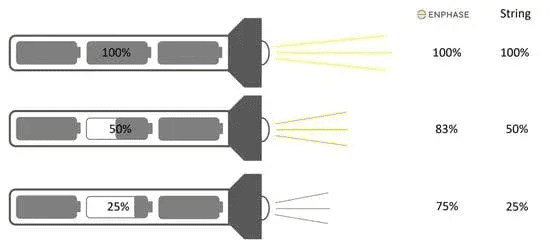
Source: Enphase
Monitoring and expansion of the installation
Microinverters also favour a modular installation. This means that, if you ever need to expand the system due to increased energy requirements, you can do so as required thanks to their stand-alone design. In contrast, string inverters are limited.
In addition, only the affected module can be disconnected and the component can be replaced. It will then return to normal operation.
As for monitoring, it is more accurate in micro inverters and this results in an early detection of yield problems. The string inverter, on the other hand, needs to be diagnosed beforehand to find the faulty panel and repair it.
Safety first
When it comes to safety, the micro inverter takes the prize.
Why is that?
The conversion from DC to AC power is done in the panel itself. This means that it is kept at low voltage and not, as with the central inverter, where the high-voltage direct current is combined and the risk of incidents is higher.
Finally, let’s talk about prices.
Price
In this case, the cost of microinverters is higher simply because they incorporate more advanced technology than string inverters.
But a couple of things need to be clarified.
When you invest in a PV system, you should not only focus on the savings at the time of purchase, but also on the future costs that may arise from installation problems or replacements.
For example, replacement costs for conventional inverters are not experienced with micro inverters because these costs are eliminated and maintenance is reduced.
How do you know which type of inverter to buy?
Considering the differences between the two, it is important to consider a number of factors in order to make the right decision:
-
What size is the system? Solar panels with microinverters are more suitable for small to medium sized installations, however, string inverters are more commonly used in larger installations.
-
Flexibility of the installation. If you need to expand your installation in the future, micro inverters make it easier to expand thanks to their independent design. Each panel has its own inverter.
-
Is your home affected by shading? When solar panels are affected by shading over and over again, microinverters provide superior efficiency because the total energy production of the system will not decrease if a panel is shaded.
-
Price. Inverters have a lower cost. Microinverters use superior, individual technology. At this point, although string inverters are cheaper, if our home is beset by shadows, it will not be the most cost-effective option.
-
In general, the maintenance of a self-consumption installation requires little effort, but if we evaluate which device offers more facilities, the microinverter entails a lower maintenance cost during the life of the system.
Which is better, microinverters or inverters?
There is no right or wrong answer. It is not definitive and yes, in the end it depends on your situation and needs.
Choosing between microinverters or inverters is a decision that must be considered with all its advantages and disadvantages. It will depend on several factors such as the size of the system, shading or price.
For example, if your house is located in an area that receives constant light and shadows are not a problem for you, string inverters will allow you to get the most out of your installation, as well as being cheaper.
But what happens if your home is haunted by shadows?
In this case, microinverters are the most efficient option because, if one panel is affected by shading, the production will not affect the rest of the modules and you will be able to continue generating energy for your domestic consumption.
On the other hand, if in the future you want to expand the installation, microinverters facilitate this process.
For this reason, at SolarMente we carry out a detailed study of your home and your consumption habits. The key is to choose the device that will provide you with the most energy to save on your electricity bill and guarantee you security and peace of mind throughout the life of the system.
>> If you want to reduce your electricity costs, we will find the right solar installation for you today.

